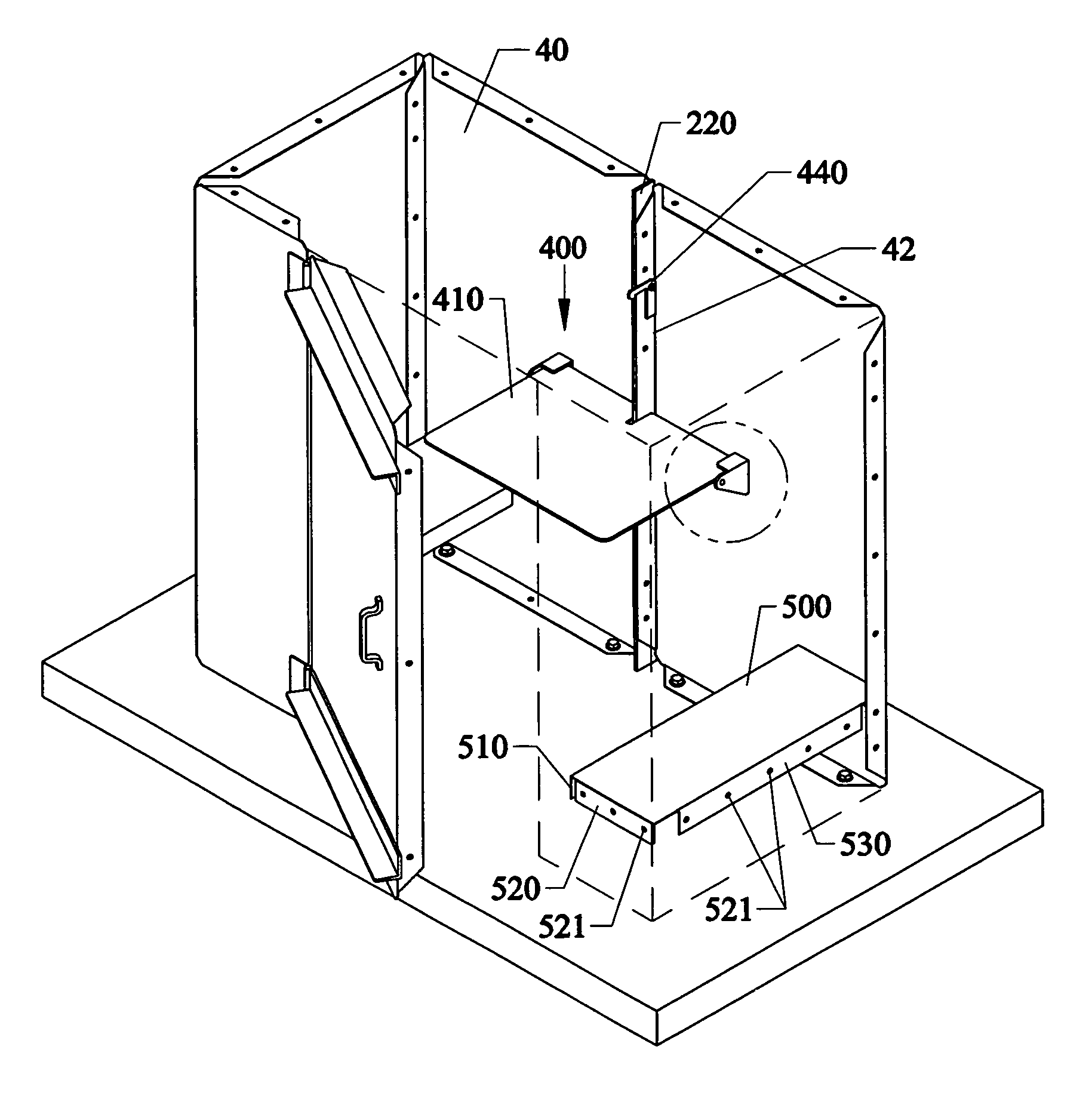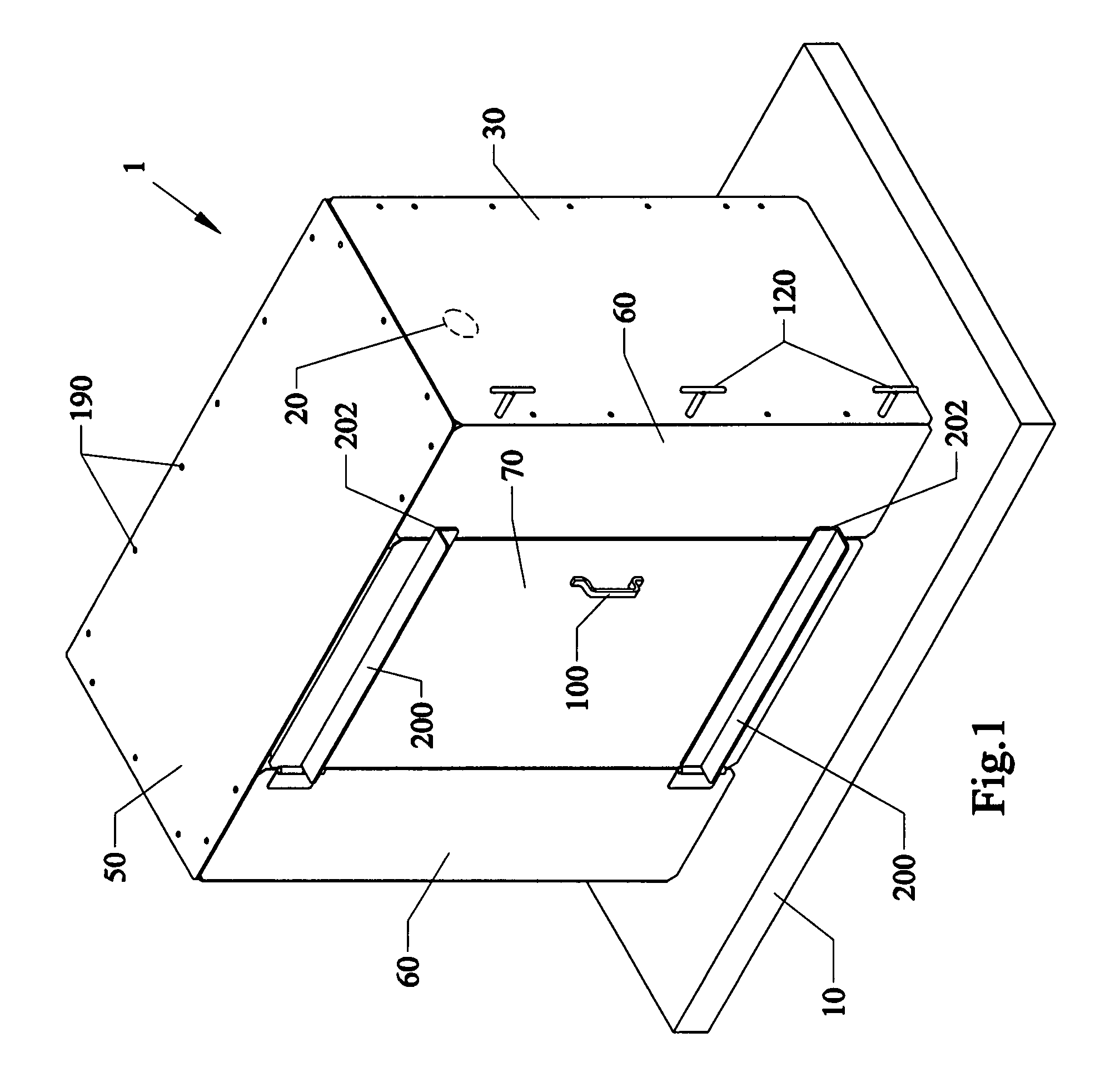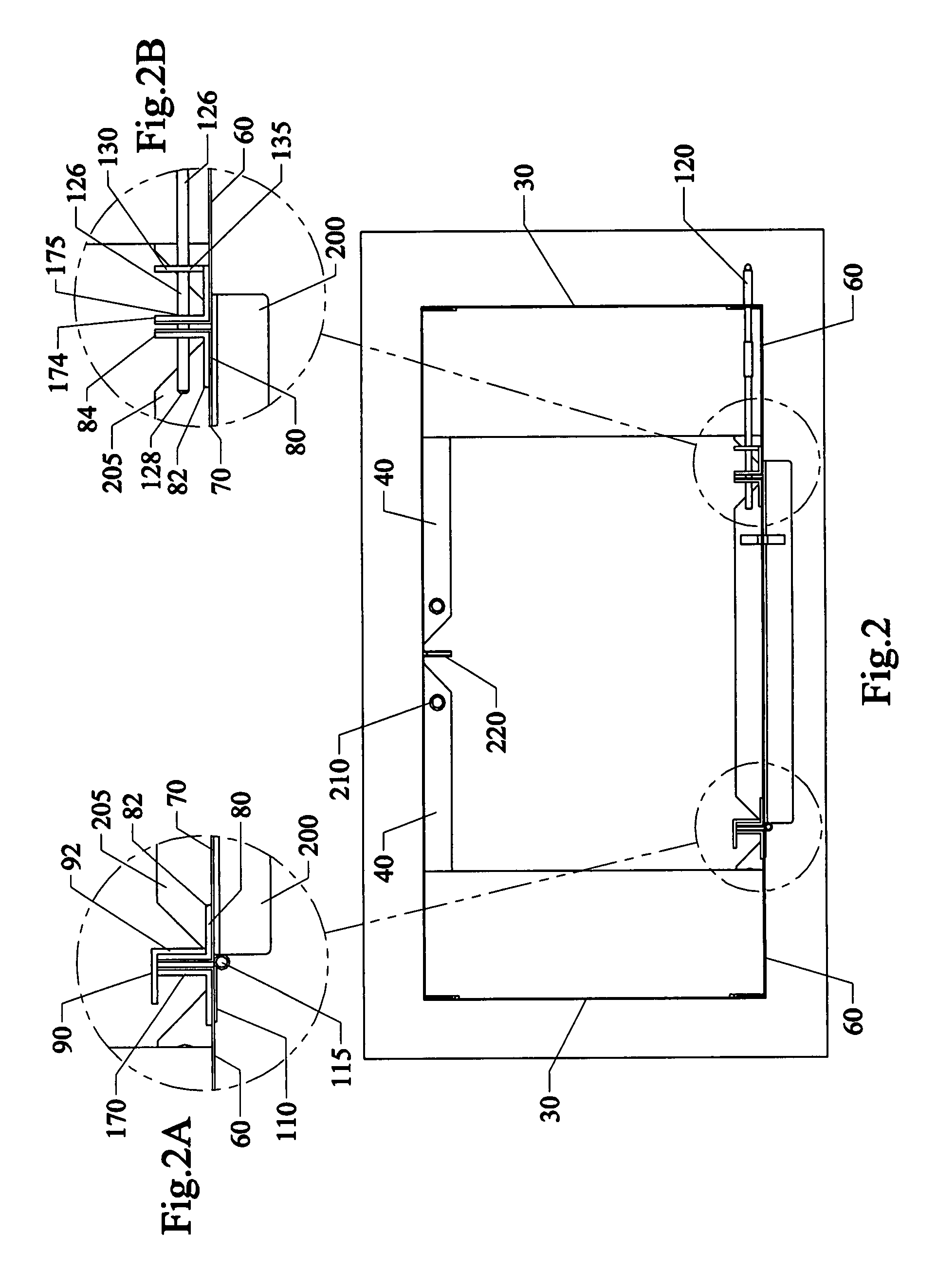Relocatable personal and/or pet safety appliance
a safety appliance and relocating technology, applied in the direction of safety, human health protection, shock proofing, etc., can solve the problems of millions of dollars in property damage, many injuries and destruction, and dangerous storms such as hurricanes and tornadoes, and achieve the effect of easy assembly and relocation and minimal cos
- Summary
- Abstract
- Description
- Claims
- Application Information
AI Technical Summary
Benefits of technology
Problems solved by technology
Method used
Image
Examples
Embodiment Construction
[0068]Before explaining the disclosed embodiments of the present invention in detail it is to be understood that the invention is not limited in its applications to the details of the particular arrangements shown since the invention is capable of other embodiments. Also, the terminology used herein is for the purpose of description and not of limitation.
[0069]A listing of the components will now be described.[0070]1. Device / Shelter[0071]10 Concrete foundation[0072]20 Optional Ventilation Holes[0073]30 end panels[0074]31 fastening holes[0075]32 upper and lower bent edges[0076]34 upper angled corner[0077]35 holes in panels 30 for handles 120[0078]39 bottom bent edge[0079]40 Back panels[0080]41 fastening holes[0081]42 Top and Bottom and side bent edges of back panels[0082]50 Top / Roof Panel[0083]51 rounded corner[0084]60 Front panels[0085]61 fastening holes in bent edges[0086]62 Tope and Bottom and side bent edges of front panels[0087]69 upper angled corner[0088]69 bottom bent edge[008...
PUM
 Login to View More
Login to View More Abstract
Description
Claims
Application Information
 Login to View More
Login to View More - R&D
- Intellectual Property
- Life Sciences
- Materials
- Tech Scout
- Unparalleled Data Quality
- Higher Quality Content
- 60% Fewer Hallucinations
Browse by: Latest US Patents, China's latest patents, Technical Efficacy Thesaurus, Application Domain, Technology Topic, Popular Technical Reports.
© 2025 PatSnap. All rights reserved.Legal|Privacy policy|Modern Slavery Act Transparency Statement|Sitemap|About US| Contact US: help@patsnap.com



